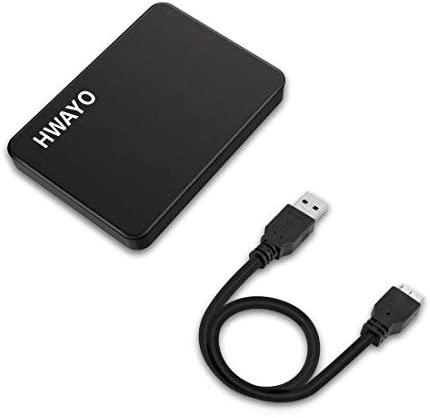We look at the benefits of tape storage – low cost, inherent security, excellent energy efficiency – the workloads it is best for, and how tape fits a wider storage strategy
Magnetic tape storage has a long history as a storage medium, being the primary way to store computer data from the 1960s to the 1980s. More recently, tape has been most closely associated with backup and long-term storage and archiving.
Those applications make the most of tape’s key attributes, which include durability and low cost, but it also arguably underestimates tape’s true potential. Recent advances in capacity and performance mean tape supports a much wider range of applications and use cases than it is often given credit for. Tape can also play an important role in defence against ransomware.
Here, we look at the most important current workloads for tape, and some emerging use cases.
What are the benefits of tape storage?
Tape storage has several advantages over other storage media, but some of these attributes are also its disadvantages.
First, tape has almost limitless capacity. Although tape cartridges themselves are smaller than hard drives, users can swap them out for offline storage, or use autoloaders or library systems to store much larger volumes. And manufacturers release new tape generations that add capacity.
The current generation LTO-9 tape offers 18TB of raw capacity that rises to 45TB with compression. LTO-10 promises to double that, with the 14th generation of LTO set to target 546TB of native storage. Already, though, systems such as IBM’s TS4500, supports up to 2.63 exabytes of compressed data.
These storage capacities are already impressive, but tape offers another advantage. Unlike hard disk drives, tape systems consume little power when not writing or reading data. A tape cartridge stored offline uses no power at all, aside from whatever is needed to keep it in a temperature-controlled environment.
“You are essentially not using any energy when tapes are not being used,” says Tony Lock, analyst at Freeform Dynamics. “It is physically just sitting there, and you don’t need to keep anything working for it to be accessible.”
Because organisations need to account for IT’s carbon footprint, this is important. CERN, which uses LTO tape, calculates that tape used 2% of its datacentre power consumption in 2021. Spinning disks used 21%. Aardman Animations, another LTO tape user, says it saved 80% in costs compared to hard disks.
A further advantage is that tape creates a physical air gap. It is easy to move tapes to an offsite location. Modern tape libraries can write multiple copies at once, which allows firms to keep on-site and off-site copies. This provides a critical line of defence against ransomware. Data on tape is safe, provided users do not re-mount it on an infected system.
What are the disadvantages of tape storage?
Tape does have some downsides. First and foremost, it is a mechanical medium and one that has limited support for random reads and writes.
To access a specific data point on a tape – say a file or database record – the system needs to move the tape until the relevant part can be read by the heads. But in some use cases, tape can compete with hard disks, although flash media will always be the best option where I/O performance is key.
Another disadvantage is the potential fragility of tape media. Tape systems, especially auto loaders, are mechanical devices and these need to be maintained. And though tape does not need power when it is offline, cartridges do need to be handled with care and stored in a clean, temperature-controlled environment to maximise their life. Tapes also need to be checked periodically for degradation.
What workloads are best for tape storage?
Backup, archiving and cold storage remain the most common applications for tape. A tape copy is still part of many enterprises’ 3-2-1 backup strategy, and backup applications now typically support tape as part of a tiered storage approach.
“Almost everyone has done a lot around making sure that tape is not just an afterthought, but a key part of their software and management platforms,” says Freeform’s Lock.
This allows firms to expand their use of tape beyond backup and archiving. Long-term archiving and “cold storage” remain the other common application for tape. Even the cloud hyperscalers use tape as part of their storage infrastructure.
Meanwhile, changes to tape technology have allowed more organisations to move towards “active archiving”, where data remains in long-term storage but is still reasonably accessible.
Active archiving has a number of applications, including compliance, scientific research, machine learning and training AI models. Aardman, for example, uses tape to keep copies at each key stage of production for its animated movies.
“It’s not just using tape for long-term, cold storage, but for warm storage. You might not be using it every day, but when you want to access it, you want to access it reasonably quickly,” says Lock. “You could look into the system for what happened 15 years ago.”
A further use case for tape is to store large data files, or continuous streams of data, that are read sequentially. Applications here include media streaming as well as scientific, research or medical data. In these cases, tape comes close to disk for continuous read speeds, but at a much lower cost.
How does tape storage fit data storage strategy?
Fortunately, any organisation that has a mature storage management architecture with tiered storage will already support tape.
For applications such as archiving – with cold and warm storage, and especially active archives – users are unlikely to know their data is on tape. The software should manage movement of data between tiers and minimise any delays during location and loading of tapes. Systems such as LTFS, or linear tape file system, hold metadata separately to speed up the process of locating data.
These developments also make it easier for software developers to tap into tape systems. A business intelligence or CRM system could, for example, retrieve data directly from tape. And, backup tools, with an increasing focus on ransomware protection, integrate tape for off-site backups.
Firms might also want to use tape alongside or as an alternative to cloud storage. Cloud has its advantages for long-term data storage, but data egress fees mean that retrieving data from the cloud can be an expensive proposition. Modern tape systems are a viable alternative for organisations that prefer to keep at least one copy of their long-term data in house.







